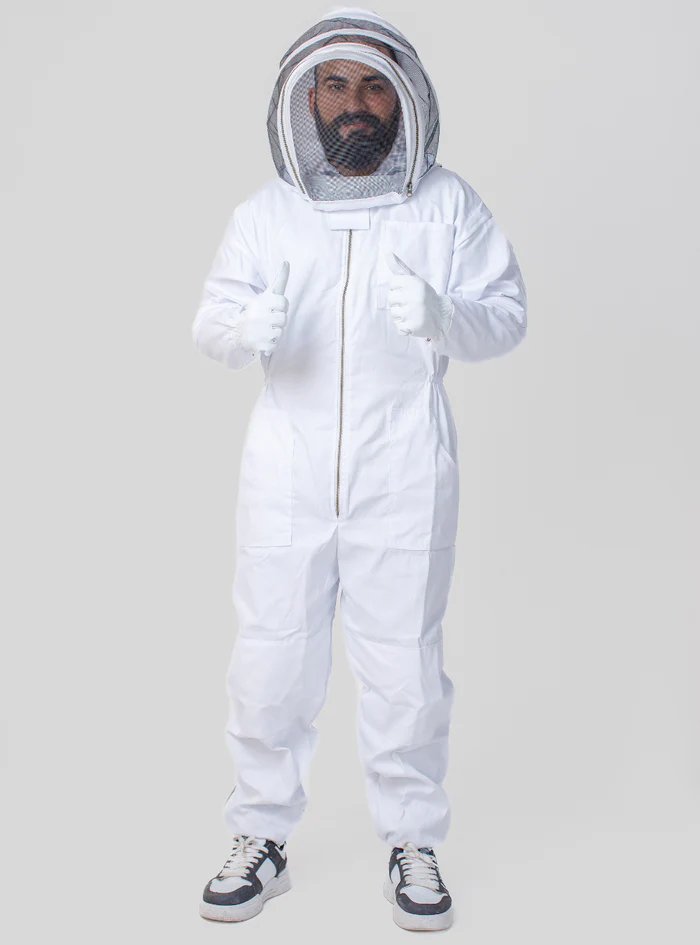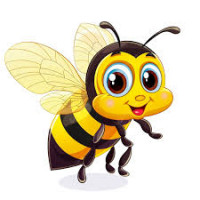Bee Keeper Suit: The Essential Protective Gear for Beekeepers

Strong 8k brings an ultra-HD IPTV experience to your living room and your pocket.
Introduction
Beekeeping is a fascinating and rewarding practice, but it comes with the inherent risk of bee stings. Whether you are a beginner or an experienced beekeeper, wearing a bee keeper suit is crucial for safety and comfort while managing hives. This specialized suit acts as a protective barrier, preventing bees from reaching your skin while allowing free movement and ventilation.
A well-designed bee keeper suit consists of multiple components, including a full-body suit, veil, gloves, and secure fastenings. Choosing the right suit enhances the beekeeping experience by ensuring both protection and ease of use. In this article, we will explore the importance of a bee keeper suit, its components, types, selection criteria, and maintenance tips.
Why Every Beekeeper Needs a Bee Keeper Suit
Handling bees without proper protective gear can lead to multiple stings, which may cause pain, allergic reactions, or even serious health complications. Bees typically sting when they perceive a threat, and during hive inspections or honey extraction, beekeepers inevitably disturb them. A bee keeper suit provides a shield against these stings, allowing beekeepers to work with confidence and reduce the risk of injury.
Beyond protection, a bee keeper suit also ensures comfort. Many modern suits are designed with breathable materials that prevent overheating, especially during warm weather. The suit’s veil offers clear visibility, while elastic cuffs and secure zippers keep bees from crawling inside. With a high-quality suit, beekeepers can focus on hive management without distractions or discomfort.
Components of a Bee Keeper Suit
Full-Body Suit
The core component of a bee keeper suit is the full-body suit, which covers the beekeeper from head to toe. It is typically made from durable materials such as cotton, polyester, or ventilated mesh fabric.
Cotton suits are thick and durable, offering excellent sting resistance but may retain heat.
Polyester suits are lighter and more flexible but might not be as breathable.
Ventilated suits feature multiple layers of mesh, allowing airflow while preventing bee stings. These are ideal for beekeepers working in warm climates.
The suit should be loose-fitting to create a buffer zone between the fabric and the skin, reducing the chances of stings penetrating through.
Veil and Hood
A beekeeper’s face and neck are the most sensitive areas when handling hives, making the veil an essential part of the bee keeper suit. The veil is made of fine mesh, ensuring that bees cannot reach the skin while allowing the beekeeper to see clearly.
Round veils offer 360-degree visibility and excellent ventilation.
Fencing veils have a front-facing mesh and are compact and lightweight.
Square veils provide rigid protection, ensuring that the mesh does not come into contact with the face.
A secure attachment between the veil and the suit is crucial to prevent bees from slipping inside.
Gloves
Hands are frequently exposed while handling bees, making gloves an important part of a bee keeper suit. Different glove materials offer varying levels of protection and flexibility.
Leather gloves provide maximum sting protection but may limit dexterity.
Rubber or nitrile gloves allow better flexibility and grip, making hive inspections easier.
Ventilated gloves combine protection and breathability, reducing sweating during long beekeeping sessions.
Some experienced beekeepers prefer to work without gloves to improve control when handling frames and bees. However, beginners are advised to wear gloves until they gain confidence.
Elastic Cuffs and Secure Fastenings
Bees can crawl into even the smallest openings, so a bee keeper suit must have tight, secure closures. High-quality suits feature elastic cuffs at the wrists and ankles, as well as sturdy zippers with overlapping flaps to prevent bees from getting inside.
A well-sealed suit ensures complete protection, giving beekeepers peace of mind while working near hives.
Boots and Foot Protection
Many beekeepers overlook foot protection, but bees often crawl upward and can enter through open footwear. Wearing high-ankle boots or secure shoe covers prevents bees from reaching the legs.
Waterproof and easy-to-clean boots are recommended, as beekeeping can be messy. Some beekeepers use beeproof shoe covers for additional security.
Types of Bee Keeper Suits
Traditional Cotton Bee Keeper Suit
This suit is made from thick cotton and provides excellent sting resistance. It is ideal for beekeepers who prioritize safety but can be heavy and warm in hot climates.
Ventilated Bee Keeper Suit
Designed for warm weather, this suit consists of multiple layers of breathable mesh fabric. It offers both sting protection and ventilation, making it a preferred choice for beekeepers working in hot or humid environments.
Beekeeping Jacket
A lightweight alternative to a full-body suit, a beekeeping jacket covers the upper body and head. It is useful for quick hive inspections but does not provide full protection for the legs. Beekeepers using a jacket should wear thick pants and boots for added safety.
How to Choose the Right Bee Keeper Suit
Selecting the right bee keeper suit depends on several factors, including material, fit, ventilation, and level of protection.
The material should be durable, breathable, and sting-resistant. Cotton is best for durability, while ventilated suits offer better comfort in hot conditions.
The veil design should provide a clear field of vision while securely attaching to the suit.
The fit should be slightly loose to prevent bees from stinging through the fabric but not so loose that it hinders movement.
Zippers and seals should be high-quality, ensuring there are no openings for bees to enter.
A well-chosen suit enhances safety and allows beekeepers to work efficiently with their hives.
Maintenance Tips for a Bee Keeper Suit
Proper care of a bee keeper suit ensures longevity and continued protection. Regular washing is necessary to remove bee pheromones, dirt, and sweat, as residual pheromones can trigger bee aggression.
The suit should be washed using mild detergent and cold water to preserve fabric strength. Storing the suit in a clean, dry area prevents mold and fabric damage. Before each use, it is important to inspect for tears, worn-out zippers, or loose seams, as even small openings can allow bees to enter.
Avoid wearing strong perfumes or scented lotions while using a bee keeper suit, as these can attract bees and make them more aggressive. Keeping the suit clean and free from sticky substances such as honey or propolis also reduces the likelihood of attracting unwanted attention from the bees.
Conclusion
A bee keeper suit is an essential piece of protective gear that allows beekeepers to manage their hives safely and comfortably. It provides a barrier against bee stings, ensures proper ventilation, and allows beekeepers to focus on hive maintenance without unnecessary distractions.
Choosing the right bee keeper suit involves considering material, fit, veil type, and overall protection. Whether opting for a traditional cotton suit, a ventilated mesh design, or a lightweight beekeeping jacket, ensuring durability and comfort is key.
With regular maintenance and proper care, a high-quality bee keeper suit will serve as a reliable companion throughout the beekeeping journey, making the experience safer and more enjoyable.
Note: IndiBlogHub features both user-submitted and editorial content. We do not verify third-party contributions. Read our Disclaimer and Privacy Policyfor details.


